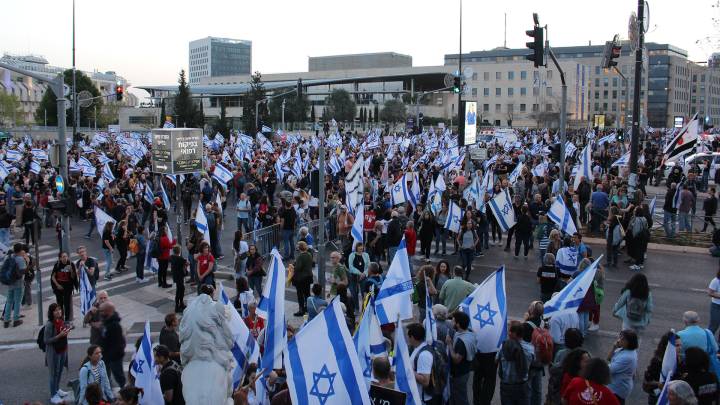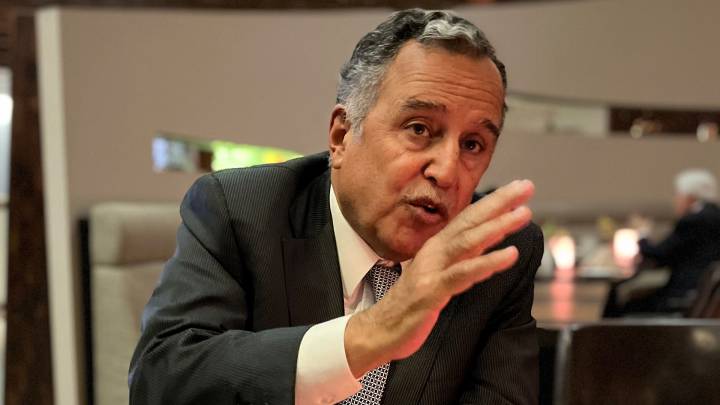Iran is pursuing a risky dual strategy in its conflict with Israel. However, the air strikes against the Revolutionary Guard raise questions about the Islamic Republic's state of preparation for military conflict.
In the early hours of April 14, Iran launched drone and missile strikes on Israel, appearing to retaliate for the April 1 bombing of Iran’s embassy complex in Syria. This escalation has prompted debates among experts regarding its significance and implications. The attack on Isfahan on April 19, which involved drones that may have been launched from within Iran or a neighbouring country, and was subsequently downplayed by Iranian authorities, further complicated the puzzle of the uncertain situation. This piece explores the broader context behind these events, examining the shifts in regional security and potential repercussions, adding some critical questions which should be considered to understand the future of Iran-Israel tension.
A Changing Regional Order
The Middle East has undergone significant changes in recent years, largely due to the Abraham Accords and Israel’s entry into CENTCOM. These developments have raised new security concerns for Iran, as the expansion of military and intelligence cooperation among Israel and its potential regional allies has shifted the balance of power. The collaboration intensified after former Israeli Defence Minister Benny Gantz’s unexpected visit to Bahrain in 2022, during which he signed a memorandum of understanding to enhance intelligence sharing and formalize cooperation. This move was followed by Israel’s announcement of a military attaché at the U.S. Navy’s 5th Fleet headquarters in Bahrain, further solidifying these alliances.
Although Iran cannot take action against the normalization of relations between the Persian Gulf Arabs and Israel, it is worried about the security and military convergence of the Arabs with Israel and the United States. The Persian Gulf Arabs have been under the American security umbrella for many years. What Iran considers as a serious threat is the greater convergence of Arabs with Israel under the leadership of the United States. The creation of a joint air defence system, which is considered by the United States and Israel with the Arabs, can be evaluated in this regard. In Iran’s attack on Israel, the joint defence system between America, Jordan, Britain and France with the Israel’s multi-layer defence system was able to destroy most of the missiles and drones fired by Iran. According to some news, Saudi Arabia and the United Arab Emirates have also provided informational assistance to America and Israel in this field. This issue shows the limited operationalization of a joint air defence system in the region, which causes a ‘balance deficit’ against the missiles and drones of Iran and its proxies.
Iran perceives these developments as a direct threat to its interests, positioning them within the broader context of Israel’s perceived strategic plans. For instance, Israel’s strategy of ‘Death by a Thousand Cuts’ aims to strike Iranian interests without provoking a full-scale war. This approach includes targeting Iran’s regional proxies and, occasionally, the Iranian regime itself. Additionally, there is Israeli Prime Minister Naftali Bennett’s ‘Octopus Doctrine’ seeks to cut off threats at their source by striking directly at the Iranian regime, rather than solely focusing on its proxies. This strategy was evident in the assassination of Hassan Sayyad Khodaei, a senior commander of the Islamic Revolutionary Guard Corps (IRGC), and the attack on Iran’s embassy complex, where Mohammad Reza Zahedi, a top IRGC commander in the Levant, was killed.
In addition to the security elements, the growing economic connectivity between Israel and other regional countries is also perceived critically in Iran. In this regard the proposed India-Middle East-Europe Economic Corridor (IMEC) further complicates Iran’s strategic calculations. Announced at the G20 Summit under U.S. supervision, this corridor could connect India to Israel via the Persian Gulf, reducing the importance of Iran’s North-South Corridor, which includes the Chabahar port. The potential loss of strategic importance for Chabahar raises concerns about Iran’s geoeconomic and geopolitical position in the region.
Iran’s Response to New Challenges
Iran has responded to these changing dynamics by pursuing a multi-faceted approach. Tehran has aimed to de-escalate tensions with key regional players, such as Saudi Arabia, Egypt, Jordan, and Bahrain. At the same time, it has increased support for groups like the Islamic Jihad Movement and formed new resistance factions to create additional pressure on Israel, particularly in the West Bank. Tehran’s aim is to create a second Gaza-like front, forcing Israel to focus on its immediate surroundings.
Iran’s military capabilities are also evolving. The acquisition and development of radar-evading weapons like hypersonic missiles represent Tehran’s efforts to counter the expanding Israeli air defence systems. Additionally, Iran’s attempt to purchase Sukhoi 35 fighters from Russia indicates a shift towards more advanced military hardware, likely aimed at offsetting Israel’s superior air capabilities.
Israel’s recent attack on Iran, which was carried out with missiles fired from fighters, showed how vulnerable Iran’s missile defence system, which is the Russian S-300, is. According to the news, these missiles were not detected by Iran air defence radar and hit the target.
In this context, Iran’s growing ties with Russia and China reflect a broader strategic realignment. The Iranian leadership’s “Look to the East” policy, as articulated by Supreme Leader Ayatollah Ali Khamenei, has solidified Tehran’s support for Russia’s war in Ukraine, providing suicide drones and considering supplying ballistic missiles. This partnership could lead to reciprocal support from Russia for Iran’s regional objectives.
Iran’s Military Actions and Its Impact
Iran’s recent military actions have clearly demonstrated a willingness to challenge regional norms. The seizure of a container ship in the Strait of Hormuz and the Iran-backed Houthi attacks on ships in the Red Sea are examples of this assertiveness. The incident on April 13, involving a Portuguese-flagged ship linked to Israeli billionaire Eyal Ofer’s Zodiac Group, shows Iran’s readiness to disrupt maritime trade routes.
These offensive moves also have domestic implications. The increase in IRGC personnel assassinations, combined with the turmoil following the Gaza war, has led to internal scrutiny of the state’s strength. Nevertheless, by attacking two nuclear-armed states (Pakistan and Israel), Iran seeks to demonstrate its power and capacity to alter regional dynamics. Iran’s leadership views their latest action as a successful demonstration of their power, aiming to reinforce its position both domestically and internationally.
Iranian authorities, at least since the start of Ebrahim Raisi’s presidency have emphasized three key pillars in their foreign policy: esteemed and respected foreign policy, smart diplomacy, and respect for neighbouring countries. By balancing these priorities, Tehran seeks to maintain its regional influence while avoiding full-scale conflict with Israel. This approach reflects a cautious strategy, focusing on minimizing risks while asserting Iran’s presence in the region.
Iran’s recent actions have garnered mixed reactions from the international community. By targeting Israel for the first time from Iran’s territory, Iran appears to be redefining its role in the region, challenging existing power structures. However, these moves could complicate its relationships with neighbouring countries, especially those in the Gulf region.
Internally, the Iranian regime has faced increasing criticism, driven by economic struggles and public dissent. The regime’s attempts to project power through military actions, such as the drone strikes on Israel, are part of a broader effort to restore confidence among its supporters. Iran’s leadership views these acts as a means to rally domestic support and strengthen its position in the face of internal challenges, while at the same time sending a message regionally and internationally about Iran’s potential capabilities.
Critical Questions for the Future
While many elements seem clearer now, and both sides appear to have returned to their shadow conflict, several critical questions remain unanswered. Will Tehran’s attempts to de-escalate with some regional actors while confronting others succeed in maintaining a balance? How will these developments impact Iran’s relations with neighbouring countries, particularly the Gulf states? Another key question is whether Iran’s recent show of force will translate into lasting stability within the establishment. Given the domestic unrest and economic challenges Iran faces, maintaining internal cohesion will be critical. Finally, the ongoing geopolitical shifts and the formation of new alliances in the Middle East will continue to shape Iran’s regional and global role.
As these questions persist, the situation between Iran and Israel remains fluid, requiring careful observation and analysis to understand the evolving dynamics. The complex interplay of regional security, international alliances, and internal politics will undoubtedly shape the future of Iran-Israel relations and the broader Middle East landscape.




